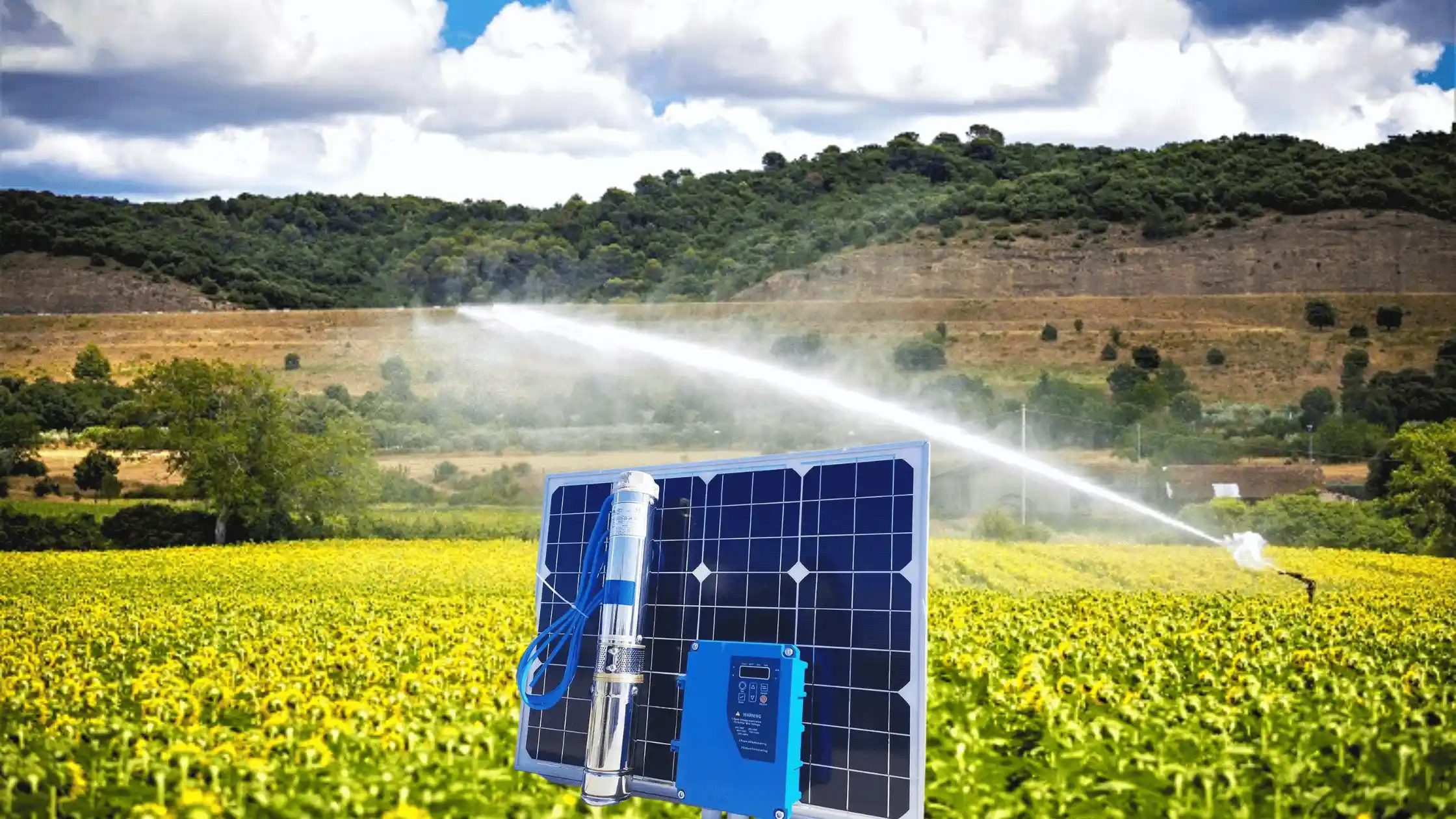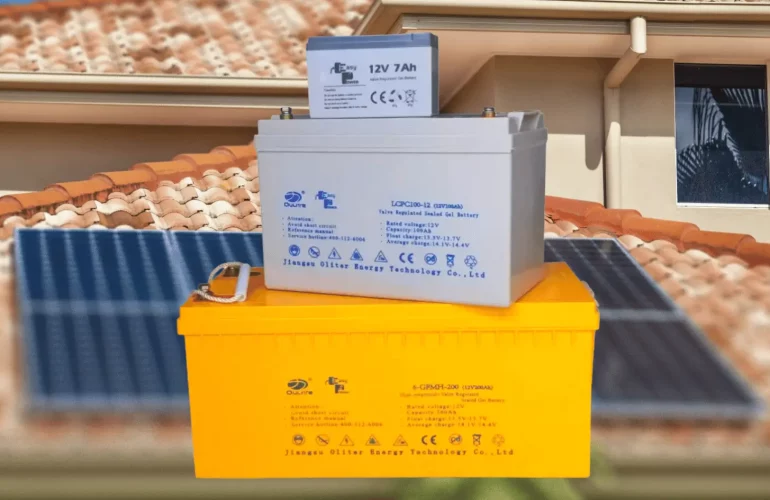How Solar Water Pumps are Revolutionizing Agriculture in Uganda
Agriculture is the backbone of Uganda’s economy, employing over 70% of the population and accounting for 25% of the country’s GDP (source). Despite the significance of agriculture in Uganda, many farmers confront major challenges in obtaining water.
Water access is a serious concern for Ugandan farmers. Uganda is a landlocked country with a rural population of more than 80%. Several of these places have minimal rainfall, high temperatures, and frequent droughts, making agricultural cultivation difficult.
The absence of water storage infrastructure, such as dams and reservoirs, aggravates the situation. This implies that many farmers are unable to irrigate their crops during periods of low rainfall, which can result in poorer agricultural yields and profitability.
Furthermore, many Ugandan farmers rely on labor-intensive and inefficient irrigation methods such as buckets or watering cans. This can result in substantial water waste and a reduction in the quantity of land that can be watered.
Additionally, the expense of obtaining water might be prohibitively expensive, particularly for small-scale farmers. Many farmers must buy water from commercial vendors or carry it from local rivers or lakes, which is both time-consuming and expensive.
Lastly, diesel or gasoline pumps are commonly used for irrigation in Uganda. Unfortunately, the high cost of fuel and the unreliability of electrical supply might make this solution prohibitively expensive and unsustainable for many farms.
Overall, Ugandan farmers face a substantial difficulty in terms of dependable and inexpensive access to water, which can limit their capacity to cultivate crops and earn money.
Solar water pumps have transformed agriculture in Uganda, particularly for small-scale farmers who confront substantial water access difficulties.
Solar energy is used to pump water from subsurface sources or adjacent rivers and lakes, providing a consistent source of water for crops and cattle.
Solar water pumps for agriculture in Uganda provide various advantages, including financial savings, environmental sustainability, increased crop yields, reduced labor intensity, and enhanced animal water availability.
These advantages have the potential to alter Ugandan farmers’ livelihoods by boosting their income, improving their food security, and contributing to the country’s economic growth.
This article will look at how solar water pumps are transforming agriculture in Uganda, as well as the obstacles and answers to their adoption.
Advantages of Solar Water Pumps in Agriculture
Solar water pumps are irrigation systems that use solar energy to pump water from subsurface sources or neighboring rivers and lakes.
They have various benefits over typical irrigation and pumping systems, including:
Savings and financial advantages: Solar water pumps do not require fuel, which may be expensive and difficult to get in rural regions. They also have cheaper maintenance costs than diesel or gasoline pumps. As a result, solar water pumps become a more cost-effective choice for farmers, particularly those in distant places.
Environmental sustainability: Because solar water pumps emit no carbon dioxide, they are a more environmentally friendly alternative to diesel or gasoline pumps. This can assist lower agricultural enterprises’ carbon footprint and contribute to overall environmental sustainability.
Increased agricultural yields: With consistent availability to water, farmers can produce crops all year, resulting in better crop yields and profitability. Solar water pumps can also be utilized to more uniformly distribute water, lowering the danger of waterlogging and boosting soil fertility.
Decreased work intensity: Because solar water pumps take minimum labor to operate, farmers’ time is freed up to focus on other agricultural operations. This can assist increase agricultural enterprises’ overall production and efficiency.
Increased livestock access to water: Solar water pumps provide a consistent source of water for animals, boosting their health and production. This can assist lower cattle death rates and boost overall livestock farming profitability.
In summary, solar water pumps provide various benefits to agriculture, including financial savings, environmental sustainability, increased crop yields, decreased labor intensity, and enhanced animal water availability.
These advantages make solar water pumps an appealing alternative for farmers, particularly those in isolated places with limited access to energy and fuel.
Ready To by A Solar Water Pump?
Case Study of Solar Water Pumps in Ugandan Agriculture
Solar water pumps are a game changer in Ugandan agriculture for small-scale farmers who confront water shortages, particularly in remote locations where access to energy is restricted. Farmers can now water their farms and grow crops all year round thanks to solar-powered pumps, resulting in better agricultural yields and improved lifestyles.
The “Sunflower Project” undertaken by the Global Resource Alliance (GRA), a non-profit organization striving to promote sustainable development in Tanzania and Uganda, is one successful case study using solar water pumps in Ugandan agriculture. The Sunflower Project is a community-led effort that aims to empower farmers by utilizing solar-powered water pumps.
The project was carried out in Mbarara, a rural area in western Uganda, where farmers endure significant water shortages during the dry season. Farmers were given solar-powered water pumps and were taught how to utilize them as part of the Sunflower Project. The initiative also assisted with land preparation and crop management.
The Sunflower Project had a huge influence. Farmers have been able to irrigate their crops throughout the dry season thanks to the use of solar water pumps, resulting in enhanced agricultural yields and improved food security. Farmers may now cultivate crops such as vegetables, maize, and beans that were previously impossible owing to water constraint.
Joyce Mugisha, a mother of six and a small-scale farmer in the Mbarara district, is one of the Sunflower Project’s beneficiaries. Joyce struggled to irrigate her property during the dry season before the project, and her crop yields were dismal. Joyce, on the other hand, can now irrigate her farm all year round thanks to the solar water pump, and her agricultural harvests have grown dramatically. She may now sell her extra crops at the local market and earn money to sustain her family.
The neighborhood has benefited from the Sunflower Project as well. Farmers may now sell their surplus harvests in the local market and make a larger revenue due to increasing crop yields. This has resulted in greater economic activity and improved livelihoods in the neighborhood.
Finally, the Sunflower Project exemplifies the potential influence of solar water pumps on Ugandan agriculture and livelihoods. Solar water pumps have enabled small-scale farmers to cultivate crops all year round by giving them with access to reliable water supplies, resulting in enhanced crop yields and improved food security. Community-led projects like the Sunflower Project are essential for supporting sustainable development and enabling small-scale farmers to better their livelihoods.

Explanation of the community-led project and how it was sustained
The “Solar-Powered Irrigation for Agricultural Resilience (SPIAR)” project is one example of a successful solar water pump application in Ugandan agriculture. The Ugandan government undertook the project in collaboration with the United Nations Development Programme (UNDP), the Global Environment Fund (GEF), and the Food and Agriculture Organization (FAO)
The SPIAR project provides 38 solar water pumps to small-scale farmers in the eastern Ugandan districts of Katakwi, Amuria, and Kaberamaido. Farmers can now cultivate crops all year thanks to solar water pumps, resulting in improved agricultural yields and income. One farmer, for example, was able to boost her tomato yield from 30 to 100 crates every season.
The SPIAR initiative was also beneficial to the community. Farmers were able to organize a cooperative to sell their products in quantity, strengthening their bargaining power and allowing them to negotiate higher rates with purchasers since they had reliable access to water. Furthermore, the SPIAR initiative produced jobs for local technicians who were trained to install and repair solar water pumps.
Challenges and Solutions to Implementing Solar Water Pumps in Ugandan Agriculture
Talk To An Expert Now
Solar water pumps have the potential to transform Ugandan agriculture by providing farmers with consistent access to water. Yet, there are significant practical issues that must be overcome in order for them to be widely adopted.
Challenges
- High initial cost: The high initial cost of solar water pumps might be a barrier for small-scale farmers who may lack the financial wherewithal to invest in the technology. This is especially true in rural regions with limited access to credit.
- Lack of technical skills: Installing and operating solar water pumps necessitates specialized technical competence, which is not always available in rural communities. This might lead to faulty or underperforming systems as a result of inadequate installation.
- Spare parts availability: If solar water pumps fail, farmers may have restricted access to spare parts. This can lead to extended downtime, which has a severe influence on agricultural output and farmer revenue.
- Unpredictable weather circumstances: Because Uganda is prone to unexpected weather events such as droughts and flooding, the performance of solar water pumps might suffer. This can result in lower agricultural yields and lower farmer revenue.
Solutions
- Government subsidies or donor money: To help small-scale farmers overcome the high initial cost of solar water pumps, governments or donors might give subsidies or grants. This can boost the use of solar water pumps and give farmers with consistent access to water.
- Training programs for local technicians: Training programs for local technicians might be designed to address the shortage of technical skills in solar water pump installation and maintenance. This may lead to job creation and guarantee farmers have access to dependable and skilled professionals to install and maintain their systems.
Local spare part manufacture: To address the issue of restricted spare part availability, local spare part manufacturing can be promoted. This may lead to job creation and guarantee farmers have access to spare components should their systems fail.
Diversification of water sources: Farmers can offset the impact of uncertain weather conditions by combining solar water pumps with other water sources such as rainwater gathering, groundwater wells, or surface water. Farmers will have access to water even if there is a drought or flooding.
The problems of deploying solar water pumps in Ugandan agriculture can be solved by government subsidies or donor financing, training programs for local technicians, local production of replacement parts, and diversification of water sources. By resolving these issues, the potential benefits of solar water pumps may be fully realized, resulting in better crop yields, higher profitability for farmers, and a more sustainable agricultural industry in Uganda.
Conclusion
Solar water pumps are transforming agriculture in Uganda by giving small-scale farmers with consistent access to water. Solar water pumps provide financial savings, environmental sustainability, increased agricultural yields, reduced labor intensity, and enhanced animal water availability.
The SPIAR project’s performance shows the potential influence of solar water pumps on Ugandan agriculture and livelihoods. Government subsidies or donor money, training programs for local technicians, and collaborations with companies that specialize in solar water pump installation and maintenance are all needed to assure the broad adoption of solar water pumps in Ugandan agriculture.




